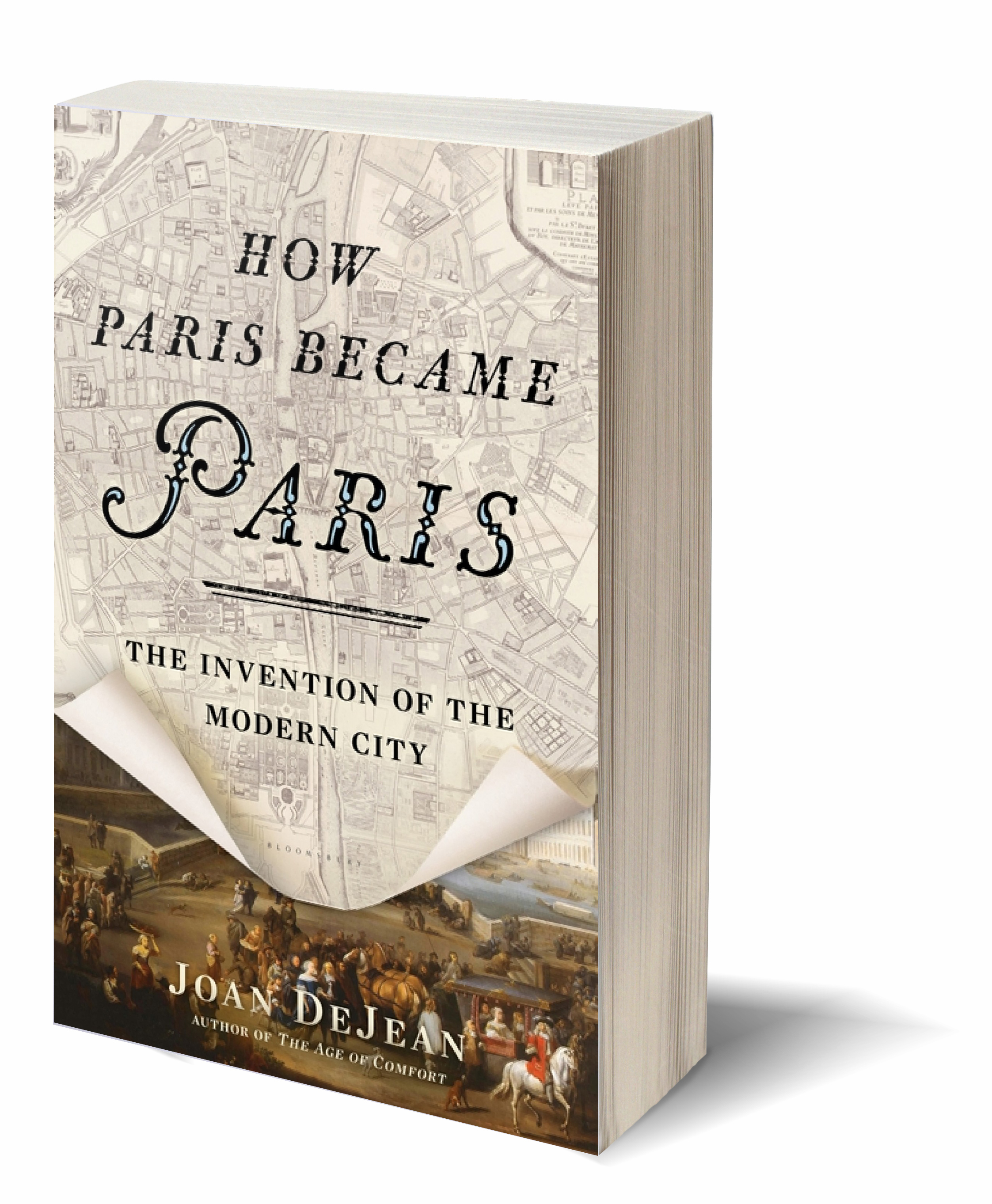Paris today is the most popular tourist destination in the world. And that is no accident, says Joan DeJean, Trustee Professor of French and the author of How Paris Became Paris: The Invention of the Modern City. “Paris was the first city to really tear the walls down, figuratively and literally,” says DeJean. “Like most cities, it was fortified, but in 1669 Louis XIV had had enough. It was transformed into the most public and vibrant city up until that point, and paved the way for cities as we know them today.”
In 1600, Paris was a city with huge amounts of empty space and undeveloped land. Religious wars had left the country underdeveloped and the population downtrodden. Within 100 years, however, unprecedented urban planning, led by the monarchy and visionary artisans, saw the rebirth of the city’s infrastructure. This included new kinds of bridges, the first-ever residential city square, planned city housing, and residential architecture in the city. At the beginning of the 17th century, the widest streets in Paris were 15 feet wide. By the end of the century the average width was between 30 and 32 feet.
“The idea of guiding people through the city had begun. A great walking city had been created whereby people could get around easily and everything was connected,” says DeJean. “This translated into a less stratified social class as well. Aristocrats in Paris walked. People were still commenting on this decades later, how unusual it was to see people of great station walking in the streets. This meant you could see how they were dressed—their fine clothes. It was like a walking advertisement for the luxury goods industry.”
In order to delve into the philosophy of the decision-makers at the time, DeJean examined royal decrees: pamphlets issued by the royal printing shop. For DeJean, this meant tirelessly sorting through historical documents at the National Library of Paris. “The light’s not very good in the library. Some people wore little miners’ hats with lights in the front. And your hands would be so blackened by the end of the day that you couldn’t touch anything,” says DeJean. Luckily, she found a kindred spirit in the form of a municipal file clerk. “Someone there was from the Caribbean and had the same last name as I did. One day she asked me where I was from and I told her Louisiana. So she asked me for some recipes and I got my books a lot faster,” DeJean laughs.
One of the main concerns the decrees addressed was the economy of Paris. This meant improving the lives of the merchant community; hence, wider streets for transportation and shopping. The second guiding principle was improving quality of life, which meant more open spaces and additional housing. This led to planned recreational space and green spaces in the city. Such attention to individual citizens’ comforts set Paris apart at the time, says DeJean, and echoed throughout the world. “In Philadelphia you have the Benjamin Franklin Parkway as a model thoroughfare with a very wide street in the middle, and then tree-lined walkways and landscaped spaces for pedestrians on either side. It harkens back to this type of thinking,” she says.
DeJean cites Saint Petersburg, the second-largest city in Russia, as one of the first descendants of Paris’ urban planning. There are documented visits with timestamps of Peter the Great studying Paris architecture and directly incorporating its parkways, or “prospects,” in Russia. Other cities, like London after the Great Fire, developed city parks and squares modeled after those in Paris.
Over time, Paris also became renowned for its entertainment and food. Actors set up makeshift stages to perform plays in public and cafés sprouted up throughout the gardens. “In the hot summer, people would sit and drink in the gardens and just enjoy the cool air in the evening,” DeJean says. “On the boulevard they would put lights in the trees at night and people would dance. Foreigners would write home to others about this, how extraordinary it was to see people dancing at 3 a.m. in the streets of a city. It’s a legacy of openness that lives on today.”




